
 Copyright 2012 by Bruce Stirling. All rights reserved. First Edition Cover by Bruce Stirling Layout and design by Bruce Stirling 3D USA Flag Map with states Ermek @ shutterstock.com Statue of Liberty and Flag etraveler @ shutterstock.com Made-in-USA stamp DinoZ @ shutterstock.com New York City Skyline silhouette vladmark @ shutterstock.com Editors Patricia Stirling, Gretchen Anderson, Kateryna Kucher, Renata C. T. Rabacov, Eddie Carillo Duplication, distribution or database storage of any part of this work by any means is prohibited without prior written approval of the publisher. Disclaimer : The characters in this text are works of fiction. Disclaimer : The characters in this text are works of fiction.
Copyright 2012 by Bruce Stirling. All rights reserved. First Edition Cover by Bruce Stirling Layout and design by Bruce Stirling 3D USA Flag Map with states Ermek @ shutterstock.com Statue of Liberty and Flag etraveler @ shutterstock.com Made-in-USA stamp DinoZ @ shutterstock.com New York City Skyline silhouette vladmark @ shutterstock.com Editors Patricia Stirling, Gretchen Anderson, Kateryna Kucher, Renata C. T. Rabacov, Eddie Carillo Duplication, distribution or database storage of any part of this work by any means is prohibited without prior written approval of the publisher. Disclaimer : The characters in this text are works of fiction. Disclaimer : The characters in this text are works of fiction.
Any likeness to any actual person is coincidental. ISBN-10: 1889057967 ISBN-13: 9781889057965 Published by Nova Press 9058 Lloyd Place West Hollywood, CA USA 90069 1-800-949-6175 www.novapress.net 
Contents
How to Use this Book
Business Idioms in America consists of twenty lessons. Combined, they describe a day-in-the-life of a Joan Austen, a rising star in the advertising business in New York City. Each lesson stands alone as a single unit of study. However, it is best to work your way through from beginning to end. By doing so, you will follow Joan and her staff as they deal with myriad business and personal challenges.
You will also be able to recycle idioms from one lesson to the next. Recycling idioms will help you remember and apply those idioms to future lessons and in real-world business situations. Format Each lesson consists of seven steps. Each step has been designed to help you develop the English skills you need to communicate proficiently in any English-speaking business environment. The seven steps are as follows.
Shakespeare (S) William Shakespeare (1564-1616) was an English poet and playwright. He is considered the greatest writer in the English language.
We all know his plays. The most famous are Romeo and Juliet and Hamlet. What, you ask, is Shakespeare doing in a book about business idioms? That, indeed, is the $64,000.00 question. The answer is simple: Shakespeare added over 5,000 words, phrases and idioms to the English language. Many are still widely used, such as to budge not an inch, which means cannot be moved or persuaded, for example:
| Mary : | Hey, Dave. Did you ask the boss for a raise? |
| Dave : | I did. |
Because you cannot learn English without learning Shakespeare, I have included in each lesson a famous Shakespearean idiom or phrase that is applicable to business English today. Because you cannot learn English without learning Shakespeare, I have included in each lesson a famous Shakespearean idiom or phrase that is applicable to business English today.
That idiom or phrase is indicated by (S). Okay, so what is an idiom? An idiom is a comparison. Let me explain. Look at the following examples. 1. 2. 2.
Jack is as hungry as a wolf. 3. Hey, wolfman! How are you? Long time, no see! 4. Jack's an animal. The guy's crazy. In examples 1 and 2, I am comparing Jack to a wolf.
A wolf is a wild animal and when hungry, watch out! When I say, "Jack is as hungry as a wolf," I am speaking (writing) figuratively. Is my friend Jack a real (literal) wolf? No. Instead, I am figuratively (idiomatically) comparing him to a wolf to create a picture in your mind. That picture emphasizes the degree of Jack's hunger. How hungry is Jack? As hungry as a wolf. As you can see, an idiom is a comparison that paints a figurative picture using words.
In examples 3 and 4, I am still figuratively (idiomatically) comparing Jack to an animal. However, I am not using the comparatives like or as. This kind of idiomatic comparison (not using like or as) is called an indirect comparison or a metaphor (met-ah-for). A metaphor is an implied (suggested) comparison. Notice how in examples 1 and 2, I do use like and as. Remember  An idiom is either a metaphor or a simile. Remember
An idiom is either a metaphor or a simile. Remember  An idiom is either a metaphor or a simile.
An idiom is either a metaphor or a simile.
How do you know if what you are reading, saying or hearing is an idiom or not? Look for the comparison. If there is a comparison (a simile or a metaphor), then it is an idiom. If there is no comparison (no simile or metaphor), it is not an idiom. If it sounds like an idiombut there is no comparisonit is probably a common expression, a prepositional phrase, a literal phrasal verb, or slang. And that, in a nutshell, is the skinny on idioms. It's time to get the show on the road.
For definitions, remember to check the word list starting on page 188. Bruce Stirling
Characters
 owner and CEO of Austen Advertising, New York City owner and CEO of Austen Advertising, New York City |
| Joan Austen |  |
Next page
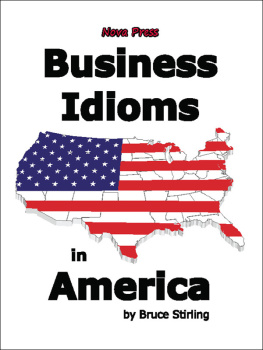


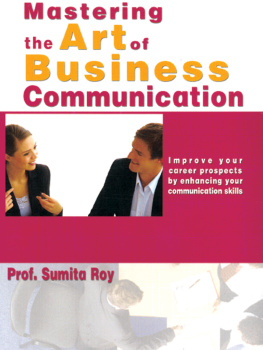
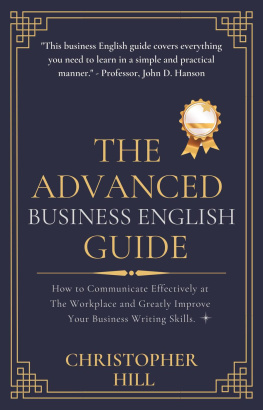


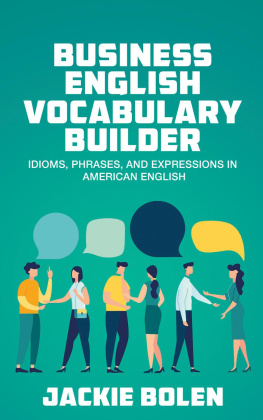
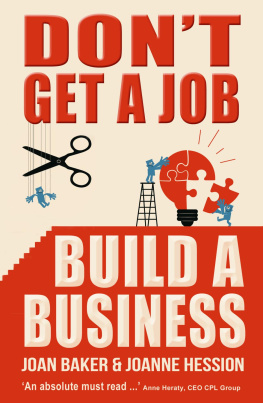


 Copyright 2012 by Bruce Stirling. All rights reserved. First Edition Cover by Bruce Stirling Layout and design by Bruce Stirling 3D USA Flag Map with states Ermek @ shutterstock.com Statue of Liberty and Flag etraveler @ shutterstock.com Made-in-USA stamp DinoZ @ shutterstock.com New York City Skyline silhouette vladmark @ shutterstock.com Editors Patricia Stirling, Gretchen Anderson, Kateryna Kucher, Renata C. T. Rabacov, Eddie Carillo Duplication, distribution or database storage of any part of this work by any means is prohibited without prior written approval of the publisher. Disclaimer : The characters in this text are works of fiction. Disclaimer : The characters in this text are works of fiction.
Copyright 2012 by Bruce Stirling. All rights reserved. First Edition Cover by Bruce Stirling Layout and design by Bruce Stirling 3D USA Flag Map with states Ermek @ shutterstock.com Statue of Liberty and Flag etraveler @ shutterstock.com Made-in-USA stamp DinoZ @ shutterstock.com New York City Skyline silhouette vladmark @ shutterstock.com Editors Patricia Stirling, Gretchen Anderson, Kateryna Kucher, Renata C. T. Rabacov, Eddie Carillo Duplication, distribution or database storage of any part of this work by any means is prohibited without prior written approval of the publisher. Disclaimer : The characters in this text are works of fiction. Disclaimer : The characters in this text are works of fiction.

 owner and CEO of Austen Advertising, New York City
owner and CEO of Austen Advertising, New York City